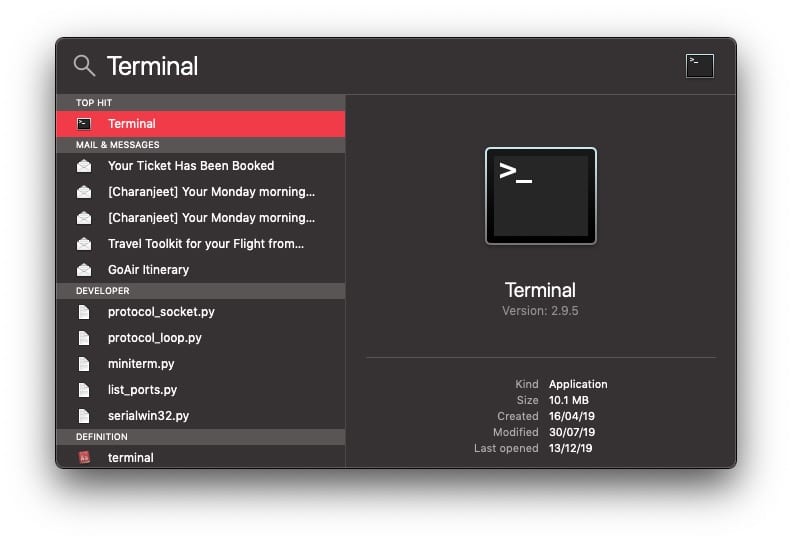

Terminal is always represented by the icon below. The first step is to open Terminal either from the Applications -> Utilities folder or simply type Terminal into Spotlight.
#Open terminal window mac how to
The Activity Monitor Application How to Use Terminal Note that process ID’s are assigned by Mac OS, and therefore will not be the same on your computer as somebody else’s. The Apple Mail application is displayed in Activity Monitor with a PID number of 14649. From here you can inspect or quit each process, but in this example we use Activity Monitor simply as a companion to Terminal.

The main Activity Monitor window is shown below.Įach application on your Mac has an associated Process ID (a PID) and a user-friendly name. When used together, Activity Monitor and Terminal provide a powerful yet relatively straightforward way to inspect and manage wayward processes. Activity Monitor shows common process-related details such as the memory used and percentage of CPU that each process is consuming. the command or application file path About Activity MonitorĪ related indispensable application is Activity Monitor – a graphical tool that allows you to manage processes, however it doesn’t have quite the same capabilities that Terminal does.Terminal is a text-based tool which lets you conduct all manner of routine tasks such as viewing directories, copying, moving and deleting files, as well as obtain detailed information about each process running including: Probably the most useful tool to check and kill processes is called Terminal, which is an application that provides access to the lower levels of the Mac OS X operating system and files.


 0 kommentar(er)
0 kommentar(er)
